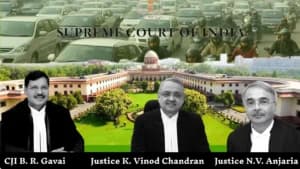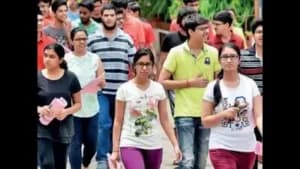The Supreme Court of India has ordered the Uttar Pradesh Subordinate Services Selection Commission (UPSSSC) to re-evaluate the answer sheets for the Revenue Lekhpal Examination held during 2021–2022. This decision affects over 8,000 candidates who appeared for 8,085 vacancies and faced issues due to ambiguities in multiple questions and their answer keys.
Read Also:-Supreme Court: Judiciary Can Direct Executive to Audit Law Implementation If Objectives Not Met
A bench comprising Justices Sudhanshu Dhulia and K. Vinod Chandran passed the order while addressing three specific questions from the Booklet Series “B”, which were found to be unclear or had multiple valid answers.
Question 58: Salt Satyagraha Location
The question asked, “Where did Mahatma Gandhi start the Salt Satyagraha?” with options:
(A) Dandi, (B) Surat, (C) Sabarmati, and (D) Pawnar.
The Court noted:
“Although the march commenced from Sabarmati, the actual act of defiance, the violation of the salt law, took place at Dandi. Thus, from a purely technical perspective, (A) Dandi should be treated as correct, as was the official position. All the same, (C) Sabarmati may be correct as well, as Dandi march started from Sabarmati, may not be technically correct but it is close. We also have to consider that it is an examination for Lekhpal.”
Read Also:-Supreme Court: Stamp Vendors Performing Public Duty Are Public Servants Under Corruption Law
Based on this, the Court directed that full marks be awarded to candidates who selected either Dandi or Sabarmati.
Question 63: Longest National Highway in Uttar Pradesh
This question referred to the longest national highway in the state. While the official answer was NH2 (Option C), changes in highway numbering had caused confusion. The Court recognized that due to outdated references, both NH2 and “None of these” (Option D) could be considered valid.
Question 90: Solar Photovoltaic Irrigation Pump Scheme
This question related to the grant percentage available to small and marginal farmers under the Solar Photovoltaic Irrigation Pump Scheme for an 1800-watt (2 HP) surface pump, besides the Central Government subsidy. The given options were 15%, 30%, 45%, and none of the above. However, the Court found that both 30% and 45% were acceptable answers due to policy updates over time.
The Supreme Court expressed concern over the quality of questions framed by the Commission, stating:
“We note with some concern that the deficiency in this case lies at the Commission's end as well for the kind of questions framed which were ambiguous or having more than one answers as correct.”
It emphasised that candidates should not be penalised for poorly framed questions and highlighted the responsibility of the Commission to maintain clarity and fairness.
“Accordingly, we direct the Commission to re-evaluate the answer scripts in light of the above findings and award marks only to the candidates/appellants herein, and continue the selection process without disturbing the candidates who have already been selected.”
With this direction, the Court ensured that affected candidates receive fair consideration, while those already selected through the process are not disturbed.
This ruling aims to balance fairness for all candidates and holds examination bodies accountable for maintaining examination standards.









